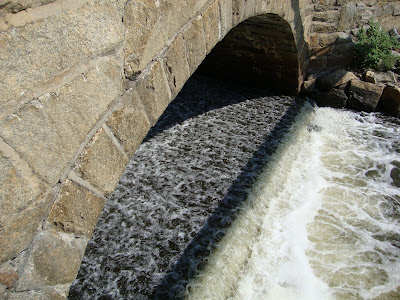Back in March I finished a rating for an ACROW temporary truss located in Russell MA. The bridge was constructed in 1986, to allow access to a factory after truck traffic was stopped over a now closed three span arch. The bridge spans over the Westfield River near a large mill and dam.
The three spans consist of two double single reinforced and one double double reinforced trusses.
The rating was our first ACROW rating and was pretty complex, we were able to break the rating down into 6 different parts.
First we checked the deck which consists of several 2.33' x 4.97' panels that weigh 282 pounds.
Next we looked at the transoms (floorbeams) which we treated as a simple span between the two truss members.
After the transoms we looked at the shear at the pinned connections which are located at each truss panel.
We then looked at the shear at the supports looking at the top and bottom cords which consist of eight to twelve channels.
Then we looked at the flexure near midspan using the section modulus of the truss and the dead load and live load moments.
Finally we checked the buckling of the top cord which ended up being the most complex part of the rating.

























